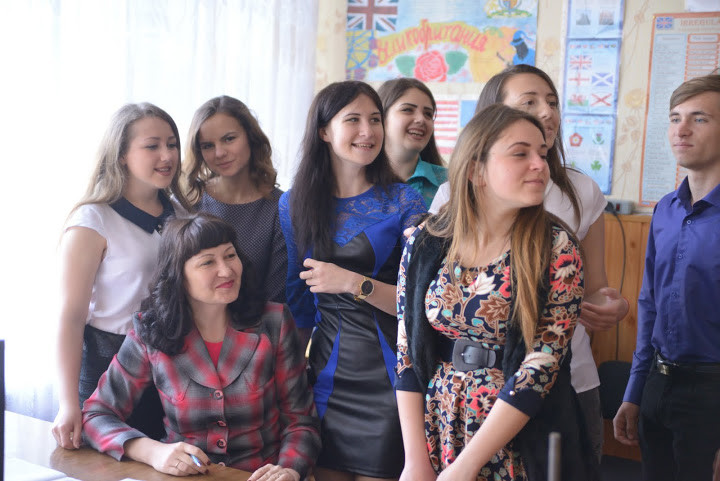Першотравневый РМК
Практический тренинг по английскому языку
Примеры упражнений
Начальная школа
Подготовила учитель английского языка Цыбалова Л.Н.
2015
1.
Greetings and introductions
Language - Hello. My name's_______________
What's your name?
Nice to meet you.
Technique Role play
- Divide the class into two groups of equal size. Get the groups to form two circles, one inside the other. The learners should face each other in pairs.
- The learners in the outer circle are "A"s and those in the inner circle are "B"s.
- Tell the pairs to introduce themselves to each other like this:
- Hello. My name's_______________
What's your name?
Nice to meet you.
- Get everyone in the outer circle (the "A"s) to move a step to the right, so that they are facing a new partner. This time, the "B"s in the inner circle should start the dialogue.
-Get the "A"s in the outer circle to continue moving round until they have gone all the way round and are back where they started. "A"s and "B"s should take turns in starting the dialogue.
2.
Colours
Language "Colours" (for example, blue, red, brown) and "everyday objects" (for example, plate, pencil, envelope, car, house, book, bag) vocabulary areas
Have you got a_______ _________?
Yes, I have.
No, I haven't
Technique Ask and answer
- Give all the learners sheets of paper. Tell them to tear them into 4 pieces.
- Get them to draw one everyday object on each piece, for example, a plate, a car,
a house. Demonstrate one or two simple drawings on the board.
- Tell the learners to colour each of the objects, or label them with the name of
a colour if they do not have coloured pencils. Each object should be in different colour. They should also write a list of their objects on a separate piece of paper, for example:
a blue pencil, a red hat, a yellow book, a brown car.
- Put the learners into small groups of three or four. Ask them to put their drawings together face down and mix them up. Then each person in the group should take four drawings.
-Tell the learners that they must get their own pictures back by asking questions. If necessary, write a model dialogue on the board as support.
Have you got a_______ _________?
Yes, I have.
No, I haven't
- The learners should take turns asking questions, like this:
L1 to L2 Have you got a red plate?
L2 Yes, I have. (gives L1 the picture of a red plate)
L2 to L3 Have you got a brown car?
L3 No, I haven't.
- When they get a picture back, they should cross that item off their lists.
3.
Describing people
Language "Describing people" (for example, tall, thin, young) and "parts of the body" (for example, hair, eyes, nose) and "colours" (for example, blue, red, brown) vocabulary areas
We are both ______.
We have both got______ _________/s.
Technique Discussion
- Ask the learner who has some things in common with you to come to the front of the class. Pre-teach "both" by standing beside him or her, gesturing, and talking about the things you have in common, for example:
We are both tall.
We have both got dark hair.
- Write the sentences on the board.
We are both ______.
We have both got______ _________/s.
- Ask for two volunteers to come to the front of the class and say what they have in common. Tell them to make notes about the things they have got in common. Give a time limit of five minutes.
- Ask pairs to stand up and tell the rest of the class the things they have in common, using the language on the board.
























